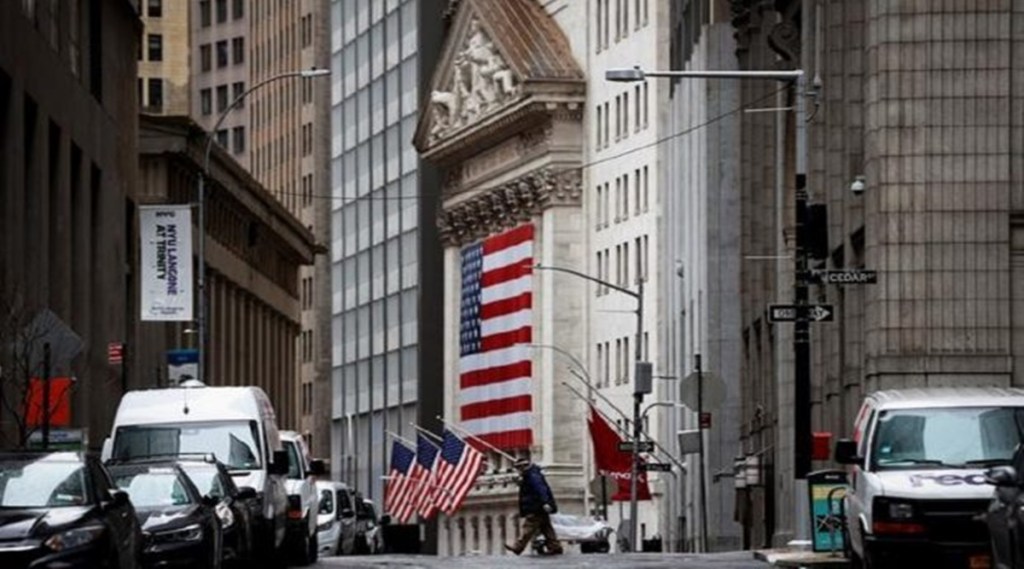Over a year ago, when the Fed and its friends were still talking about inflation being transient, I had commented that when US inflation reached 8%, both the Federal Reserve and the market would get spooked.
And here we are, with US inflation hitting 7.9% in February, and sure enough, US equities that had already been faltering since the start of the year took a deep dive. The Federal Reserve jumped up frantically, raised rates by 25 basis points and announced that it would be raising rates at each of the next seven meetings this year.
Indeed, chairman Jerome Powell said a couple of days later that they may even raise rates by a half a percentage point. Equity markets breathed a sigh of relief and ramped higher, with the week recording its best gains since 2020, and have been buoyant ever since.
My concern, however, is that the Fed still seems to believe that inflation is transient and it will fall on its own under very modest ministrations—even after the advertised rate hikes, the Fed funds rate will be below 3%. If the Fed believes that inflation will fall back (from near 8%) to 3% by the end of the year, it has clearly been celebrating Holi with a lot of bhaang. In all likelihood, real interest rates will still be negative and inflation will continue to climb higher.
There are any number of fundamental forces that will drive this. Putin’s war and its impact on the price of oil and a whole range of strategic raw materials, the further ravaging of supply chains which were just slowly coming back towards normal after the Covid-19 trauma, the fact the Covid-19 is still around, accelerating de-globalisation as a result of all of this, and the fact that a significant share of total investment dollars are relatively immune to modestly higher interest rates.
The problem is that the Fed is flying touchy-feely, which, to be fair, is how the Fed has been running monetary policy for decades. It tells the market what it plans to do, and then does just that, and gets shabashi as asset prices keep rising, confirming to the Fed that its approach is working.
Till recently, none of this really mattered because the forces of globalisation kept inflation tightly in the bag. But now that the cat has torn its way out of the bag, these pathetic dot plots and other tools used by the Fed are just so much academic claptrap.
In point of fact, there is no way for anyone to know prima facie how prices will move if the Fed funds rate is raised by, say, 0.25% or 0.5% or 1.5%. This is all the more so when, as now, inflation has been ignited; at a time like this, the only job in town should be to manage inflation expectations. Otherwise, as long as people think prices would keep rising, they have the incentive to spend now; in particular, in the US, wage inflation appears to be close to on fire.
And if all the Fed is doing is tinkering—and when inflation is 8%, even a 2% hike is merely tinkering—with the funds rate, the market is going to pay precious little attention till circumstance (a mighty recession, perhaps) compels prices lower.
Indeed, this was the experience back in the 1940s, when after World War II, to quote Scott Minerd (of Guggenheim Partners), “…the supply-demand imbalance [of goods] was caused by the virtual cessation of production of consumer durables, not unlike what happened at the onset of the pandemic.”
Prices spiked with the CPI jumping from 3.1% to over 20% within a year, following the explosive growth in money supply as a result of the war [again, not unlike the huge increase in the Fed’s balance sheet after the pandemic].
However, at that time, in relatively short order, pent up demand and corresponding supply returned as prices rose and spurred production and inflation eased. What is important is that, during this time, the Fed stopped tinkering with short-term rates and “focused instead on the supply of money and credit as opposed to the price of money and credit.”
Significantly, during the other great inflation the world has suffered (in the 1970s), Paul Volcker, the patron saint of inflation-fighting, also realised that rather than focusing on interest rates, the Fed needed to control money supply.
“By emphasising the supply of reserves and constraining the growth of the money supply through the reserve mechanism, we think we can get firmer control over the growth in money supply in a shorter period of time,” he had said then.
And he did. Consumers stopped spending when they realised Volcker would end inflation. Businesses stopped raising prices for the same reason. To be sure, the economy went through a tough, tough, tough period, but that’s the price you pay when you let things get out of control; when you don’t take the punch bowl away before the party gets lit—any number of hangovers attest to this.
The Fed needs to once again shift its focus from tuning the funds rate to controlling money supply. It has already stopped buying bonds, which is a good first step.
But it needs to convince the market that it means business, by shifting focus from rate hikes and actually selling bonds which would tighten money supply directly. To be sure, this will be tricky and likely create substantial volatility because markets are unaccustomed to dealing with the risk of interest rates changing without any pre-direction.
Thus, equity markets will certainly tank, perhaps triggering the long-expected recession. But then they will stabilise and, most importantly, so will inflation. Powell needs to channel his inner Volcker—let’s call Paul!
The author is CEO, Mecklai Financial; http://www.mecklai.com

